q1
What is nuclear energy?
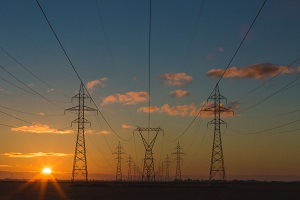 Nuclear energy refers to the energy contained in the nucleus of an atom. This energy can be released in two ways: either the nucleus fuses with another nucleus (nuclear fusion) or it splits into two parts (nuclear fission). Nuclear fission has been controlled on an industrial scale to generate electricity since the fifties. The nuclear chain reaction of uranium atoms is currently used in French nuclear reactors.
Nuclear energy refers to the energy contained in the nucleus of an atom. This energy can be released in two ways: either the nucleus fuses with another nucleus (nuclear fusion) or it splits into two parts (nuclear fission). Nuclear fission has been controlled on an industrial scale to generate electricity since the fifties. The nuclear chain reaction of uranium atoms is currently used in French nuclear reactors.
q2
How does a nuclear power plant operate?
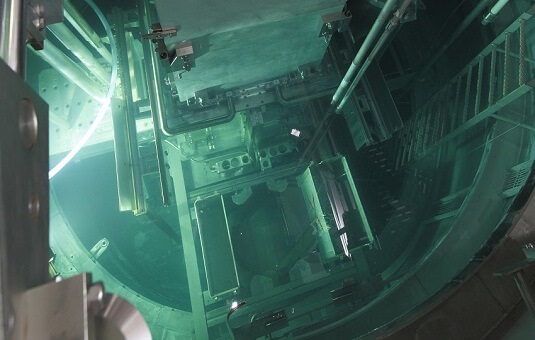 A nuclear power plant operates much like a conventional thermal power plant, i.e. it generates steam to rotate a turbine connected to an alternator which generates electricity. The difference lies in the type of fuel used and the way this steam is generated. In a nuclear power plant, the fuel is mainly radioactive nuclei of fissile uranium. These nuclei split when they collide with neutrons and release a large quantity of energy in the form of heat, which is removed from the reactor via a primary pressurised water system. The heat collected by the water in this first system is transferred to a secondary system containing water which vaporises into steam and is used to drive turbines and generate electricity. The part of the nuclear power plant designed to generate and control nuclear fission reactions is called a nuclear reactor.
A nuclear power plant operates much like a conventional thermal power plant, i.e. it generates steam to rotate a turbine connected to an alternator which generates electricity. The difference lies in the type of fuel used and the way this steam is generated. In a nuclear power plant, the fuel is mainly radioactive nuclei of fissile uranium. These nuclei split when they collide with neutrons and release a large quantity of energy in the form of heat, which is removed from the reactor via a primary pressurised water system. The heat collected by the water in this first system is transferred to a secondary system containing water which vaporises into steam and is used to drive turbines and generate electricity. The part of the nuclear power plant designed to generate and control nuclear fission reactions is called a nuclear reactor.
Infographic in French on the operation of a nuclear power reactor
q3
How much energy does a nuclear reactor generate?
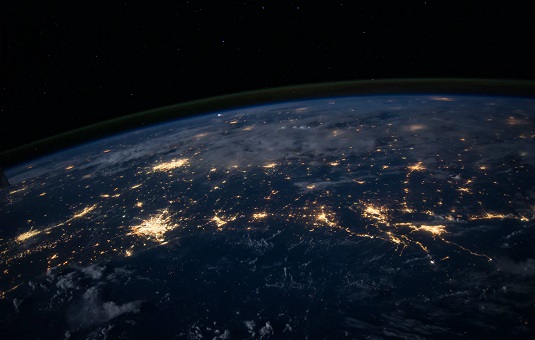 A nuclear reactor is defined by its electrical power (the letter ‘e’ is added to the power unit Watt, i.e. We). More than half of the nuclear reactors operating in France generate 900 MWe of electrical power each. The other nuclear reactors generate between 1300 MWe and 1450 MWe each. Every month, a 900 MWe reactor generates enough electricity to power an average of 500,000 homes.
A nuclear reactor is defined by its electrical power (the letter ‘e’ is added to the power unit Watt, i.e. We). More than half of the nuclear reactors operating in France generate 900 MWe of electrical power each. The other nuclear reactors generate between 1300 MWe and 1450 MWe each. Every month, a 900 MWe reactor generates enough electricity to power an average of 500,000 homes.
q4
How many nuclear reactors are operated in france?
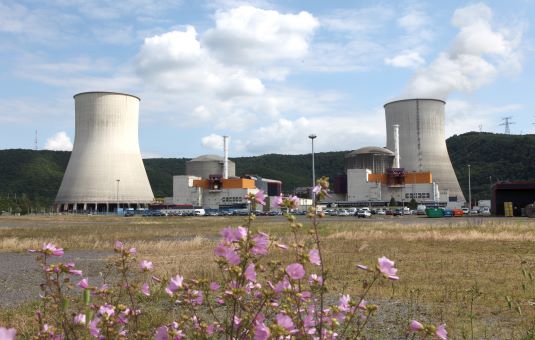 The current fleet of nuclear reactors producing electricity in France comprises a total of 56 pressurised water reactors (PWR), known as ‘Generation II’ reactors. The fleet will soon include 1 evolutionary power reactor (EPR1) which is in the final stages of construction at Flamanville, known as ‘Generation III’. The 56 PWRs making up the French fleet are all based on the same technology and are very similar from a technical perspective. They are spread over 18 sites, with each power plant comprising between 2 and 6 reactors each:
The current fleet of nuclear reactors producing electricity in France comprises a total of 56 pressurised water reactors (PWR), known as ‘Generation II’ reactors. The fleet will soon include 1 evolutionary power reactor (EPR1) which is in the final stages of construction at Flamanville, known as ‘Generation III’. The 56 PWRs making up the French fleet are all based on the same technology and are very similar from a technical perspective. They are spread over 18 sites, with each power plant comprising between 2 and 6 reactors each:
- 32 reactors producing 900 MWe
- 20 reactors producing 1300 MWe
- 4 reactors producing 1450 MWe
1Formerly called the European Pressurised water Reactor
Map of nuclear power plants in France as of January 1, 2021 - In French
Map of nuclear power plants in France - In French © CEA/Agence Gimmik
q5
What is the fraction of nuclear power in the energy mix in france?
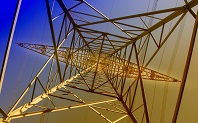 Nuclear energy is responsible for 72% of France’s total electricity production, making it the country with the highest fraction of nuclear power in its energy mix. It also boasts the second highest installed power capacity worldwide, generating 61.37 GWe*. The US is the leader with 95.52 GWe (93 reactors in operation*), while China takes third place with 50.86 GWe*.
Nuclear energy is responsible for 72% of France’s total electricity production, making it the country with the highest fraction of nuclear power in its energy mix. It also boasts the second highest installed power capacity worldwide, generating 61.37 GWe*. The US is the leader with 95.52 GWe (93 reactors in operation*), while China takes third place with 50.86 GWe*.
*IAEA data
q6
What fuel is used in a nuclear power plant?
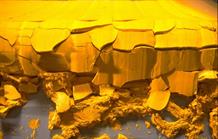 Uranium oxide is generally the fuel used in nuclear reactors. Uranium is a natural element found in most rocks and soil, but requires processing through a series of steps. Uranium must first be extracted from the ore. It is then dissolved and chemically treated, which results in a uranium ore concentrate known as yellow cake. Only a small fraction (0.7%) of natural uranium produces a fission reaction, i.e. the uranium isotope known as uranium-235, whereas uranium-238 is the most abundant form. The concentration of uranium-235 must be between 3 and 5% of the fuel to obtain a fission chain reaction, which is why the fuel must be enriched. Enriched uranium is then transformed into a powder, compressed into 7-gram pellets and stacked into metal tubes called fuel rods. These rods are 4 metres long and are grouped into bundles to make fuel assemblies that form the core of a nuclear reactor.
Uranium oxide is generally the fuel used in nuclear reactors. Uranium is a natural element found in most rocks and soil, but requires processing through a series of steps. Uranium must first be extracted from the ore. It is then dissolved and chemically treated, which results in a uranium ore concentrate known as yellow cake. Only a small fraction (0.7%) of natural uranium produces a fission reaction, i.e. the uranium isotope known as uranium-235, whereas uranium-238 is the most abundant form. The concentration of uranium-235 must be between 3 and 5% of the fuel to obtain a fission chain reaction, which is why the fuel must be enriched. Enriched uranium is then transformed into a powder, compressed into 7-gram pellets and stacked into metal tubes called fuel rods. These rods are 4 metres long and are grouped into bundles to make fuel assemblies that form the core of a nuclear reactor.
Every four years, the spent fuel rods are removed from the reactor core to be partially recycled.
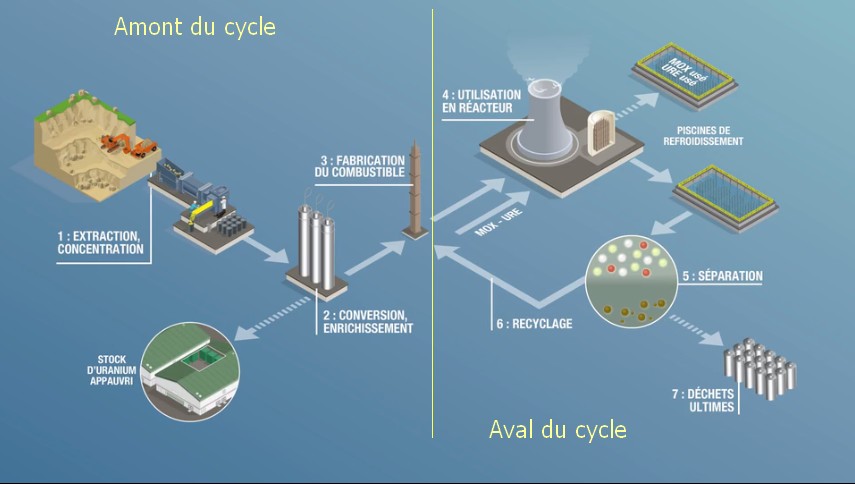
The nuclear fuel cycle in French - © CEA/Com Ci Com Ca
q7
Can nuclear energy be qualified as low carbon?
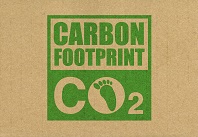 Nuclear energy is considered low carbon because it does not emit any greenhouse gases which contribute to global warming. Nuclear energy can therefore significantly help reduce the level of carbon produced within the energy mix of many countries by supplementing other low-carbon energy sources such as hydroelectric, wind and solar power, etc. As is the case for all energy sources, the entire life cycle of a nuclear power plant and its carbon footprint due to the manufacturing of its components (concrete engineered structures, reactor vessel steel, nuclear fuel, etc.) must be taken into account to measure its overall environmental impact. This is why we talk about low-carbon energy and not carbon-free energy. Currently, no energy source can be considered as 100% carbon free.
Nuclear energy is considered low carbon because it does not emit any greenhouse gases which contribute to global warming. Nuclear energy can therefore significantly help reduce the level of carbon produced within the energy mix of many countries by supplementing other low-carbon energy sources such as hydroelectric, wind and solar power, etc. As is the case for all energy sources, the entire life cycle of a nuclear power plant and its carbon footprint due to the manufacturing of its components (concrete engineered structures, reactor vessel steel, nuclear fuel, etc.) must be taken into account to measure its overall environmental impact. This is why we talk about low-carbon energy and not carbon-free energy. Currently, no energy source can be considered as 100% carbon free.
q8
How is nuclear safety and security guaranteed for nuclear power plants in France?
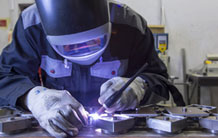 Nuclear power plants are monitored, inspected and assessed throughout their entire life time. Everything is done to make sure the safety of people and the security of the plant are upheld at all times, and that the risks are integrated as early as the design phase. In concrete terms, the plants are protected via a set of successive and independent defence systems (external reinforced concrete structure, containment vessel, fuel rod cladding, control rod mechanisms, emergency cooling system, etc.) that protect against any potential hazards. This defence in depth of nuclear facilities thus avoids the possibility of any runaway reactions. Nuclear power plants must also be able to resist extreme natural events (earthquakes, flooding, snow, storms, etc.). Such requirements are taken into account from design and their resistance is reassessed on a regular basis.
Nuclear power plants are monitored, inspected and assessed throughout their entire life time. Everything is done to make sure the safety of people and the security of the plant are upheld at all times, and that the risks are integrated as early as the design phase. In concrete terms, the plants are protected via a set of successive and independent defence systems (external reinforced concrete structure, containment vessel, fuel rod cladding, control rod mechanisms, emergency cooling system, etc.) that protect against any potential hazards. This defence in depth of nuclear facilities thus avoids the possibility of any runaway reactions. Nuclear power plants must also be able to resist extreme natural events (earthquakes, flooding, snow, storms, etc.). Such requirements are taken into account from design and their resistance is reassessed on a regular basis.
The effectiveness of these defence systems must be demonstrated in safety reports and periodic safety reviews, both during the design phase and throughout the life time of the power plant.
In France, the
Nuclear Safety Authority (ASN) is responsible for assessing and checking the measures defined and applied by the operators. The French Nuclear Safety and Transparency Act stipulates the requirement for a safety inspection every ten years for nuclear facilities. R&D in France is also constantly focusing on improving the safety and efficiency of reactors.
q9
What is the service life of a nuclear power plant? How long can you extend its service life?
 The nuclear power plants in France are designed to operate for at least 40 years. The 56 reactors currently operating in France were commissioned between 1977 and 1999. These reactors are regularly inspected during their operational lifetime by both the operator EDF and the regulator ASN to ensure their safe operation. Their maintenance is organised in the following manner:
The nuclear power plants in France are designed to operate for at least 40 years. The 56 reactors currently operating in France were commissioned between 1977 and 1999. These reactors are regularly inspected during their operational lifetime by both the operator EDF and the regulator ASN to ensure their safe operation. Their maintenance is organised in the following manner:
- The different equipment and systems in the plant are monitored every day and all the necessary adjustments or repairs are made.
- Each reactor is shut down for 5 to 6 weeks about every 18 months to refuel part of the core.
- A full inspection of the reactor is carried out every ten years (inspection outage) to check its main components such as the reactor vessel, the primary system, the steam generators and the reactor containment. At the end of this inspection, the ASN gives it approval for the reactor to continue operating or not.
Since February 2021, the ASN has been considering the possibility of allowing the thirty-two 900 MWe reactors to operate for an additional ten years after their fourth ten-yearly inspection outage.
q10
Why and how do you dismantle a nuclear power plant?
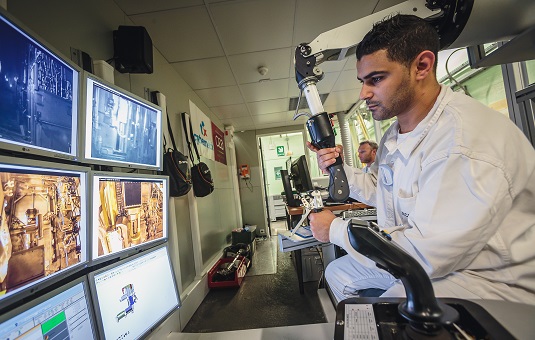 When a nuclear power plant or facility reaches the end of its service life whether for economic, political or safety reasons, the decision is made to go ahead with its dismantling. The objectives of dismantling a nuclear facility are:
When a nuclear power plant or facility reaches the end of its service life whether for economic, political or safety reasons, the decision is made to go ahead with its dismantling. The objectives of dismantling a nuclear facility are:
- Remove radioactive materials and waste still in the facility at the end of the operating phase
- Decontaminate and dismantle the equipment
- Clean up the rooms and floors, and demolish the facility buildings where necessary.
The dismantling phase can last several decades. It must be planned in advance to manage all issues associated with nuclear safety, occupational radiation protection and environmental protection. A nuclear safety review is conducted at each stage of the dismantling process to ensure that all operational risks are under control.
Once these stages have been completed, the facility can then be declassified and used for other industrial purposes.
In 2020, 51 civil nuclear facilities were in their shutdown phase irrespective of their type, e.g. nuclear power reactors, research facilities, laboratories, fuel reprocessing plants, waste treatment plants, etc. Out of these 51 facilities, 36 belong to the CEA, 9 to EDF and 6 to Orano. The first pressurised water reactor, on the Fessenheim site, was shut down in February 2020.
q11
What do we do with nuclear waste? how is it treated?
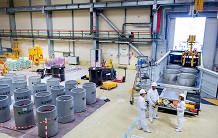 Radioactive waste can be either material or components, such as rubble, tools, gloves, unrecycled spent fuel, worn parts, or parts from a nuclear facility being dismantled. They contain radioactivity and no further use can be made of them. The French classify their radioactive waste according to two criteria: their lifespan and their level of radioactivity.
Radioactive waste can be either material or components, such as rubble, tools, gloves, unrecycled spent fuel, worn parts, or parts from a nuclear facility being dismantled. They contain radioactivity and no further use can be made of them. The French classify their radioactive waste according to two criteria: their lifespan and their level of radioactivity.
Its nuclear industry ensures the sorting, reprocessing, recycling, disposal and monitoring of its waste.
Up to 96% of spent fuel from nuclear reactors can be recycled. In France, the recycling of spent fuel not only helps to economise its natural uranium resources, but also reduce the volume of waste by a factor of 5 and its radioactivity by 10. France is the country that has most developed and used fuel recycling methods, deployed in the Orano plant at La Hague.
Radioactive waste is managed as soon as it is produced. It is conditioned to prevent the transfer of any radioactivity into the environment, and it is placed in interim storage or disposal facilities that are under strict surveillance. The French National Agency for Management of Radioactive Waste (Andra) is responsible for keeping an inventory of all the radioactive waste in France. This inventory is published online at andra.fr.
q12
What is an EPR? How does an EPR differ from a current reactor?
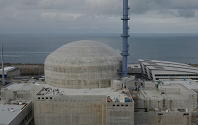 The EPR (EPR = Evolutionary Power Reactor, initially called the European Pressurised Reactor) is a French-designed third-generation nuclear reactor based on the pressurised water reactor technology. The main developments made to the EPRs compared with the current reactors concern their safety features, which have been further strengthened. More specifically, this reactor technology has been designed with a corium catcher. This system is designed to recover any corium - molten fuel and metal structures - that may form in the event of a severe accident. EPRs also generate more power than the current reactors, providing 1650 MWe. Lastly, they boast improved efficiency and uranium is used more efficiently. This means they should be more economical and generate less nuclear waste for the same quantity of electricity.
The EPR (EPR = Evolutionary Power Reactor, initially called the European Pressurised Reactor) is a French-designed third-generation nuclear reactor based on the pressurised water reactor technology. The main developments made to the EPRs compared with the current reactors concern their safety features, which have been further strengthened. More specifically, this reactor technology has been designed with a corium catcher. This system is designed to recover any corium - molten fuel and metal structures - that may form in the event of a severe accident. EPRs also generate more power than the current reactors, providing 1650 MWe. Lastly, they boast improved efficiency and uranium is used more efficiently. This means they should be more economical and generate less nuclear waste for the same quantity of electricity.
EPRs are already operating in China (2) and Finland (1), with others being built in France (1) and in the UK (1). Fourteen more EPRs are expected to be built in India, the UK and France.
q13
What kind of future does nuclear energy have in france?
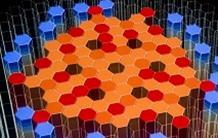 New reactor technologies, such as SMRs, are also being studied to optimise the efficiency of nuclear energy, to further decarbonise the energy industry, and to secure France’s energy independence in the long term. In the much longer term, thermonuclear fusion is also being investigated as a potential solution.
New reactor technologies, such as SMRs, are also being studied to optimise the efficiency of nuclear energy, to further decarbonise the energy industry, and to secure France’s energy independence in the long term. In the much longer term, thermonuclear fusion is also being investigated as a potential solution.
What is a SMR?
Small modular reactors (SMR) are not only smaller in size and produce less power (between 50 and 500 MWe), but they also have the specificity of being modular: this means the different systems are designed to be manufactured in series and can be delivered to the site in question for assembly. Thanks to their low power, SMRs can be integrated into local power grids and are particularly well suited for operation in isolated areas. These small reactors would allow us to quickly reduce the carbon footprint of a significant share of the electricity production. In the long term, they could also be used to produce heat and/or hydrogen by combining them with high-temperature electrolysers, or even to provide fresh water through the desalination of seawater. All SMR projects designed and developed in France are based on the pressurised water reactor technology.
Generation IV nuclear reactors
Generation IV refers to the reactors currently being designed and which may be deployed on an industrial scale sometime in the second half of the 21st century. This reactor technology is based on fast neutrons and operation at higher temperatures, enabling the optimised use of nuclear fuel. Research on these future systems is being carried out under the Generation IV International Forum (GIF) which has defined four criteria to be met: sustainability, nuclear safety, economic competitiveness, and resistance to nuclear proliferation. The CEA has been asked by the French government to actively monitor the progress of all Generation IV concepts.
Nuclear fusion and ITER
Other than R&D focusing on fission reactors, France and the CEA more specifically are carrying out research programmes on nuclear fusion with the end goal of generating electricity. This research is supporting the
ITER international project that is currently building the world’s largest tokamak in the south of France. The purpose of the project is to demonstrate that thermonuclear fusion, i.e. the power of the sun and stars, can be used as a clean source of energy on a large scale to produce electricity. The first tests are scheduled for 2025.
q14
Why does France invest so much in nuclear energy?
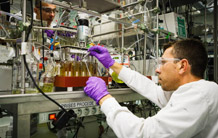 France initiated a broad programme to develop nuclear energy as early as 1945 during which General de Gaulle set up the French Atomic Energy Agency. Its objective was to meet the increasing demand for power at a low cost while remaining independent. The first generation of nuclear power plants were commissioned in 1956. Following the first petrol crisis in 1973, the French government decided to build a second generation of pressurised water reactors (PWR). Over the years, progress made in technology has brought improvements like a higher power output and enhanced safety features, while continuing to reduce the overall cost of the electricity generated. Since its creation, the CEA had led research in many fields to help resolve issues encountered by the French nuclear industry. The CEA therefore helps improve the competitiveness, nuclear safety and lifetime of the French nuclear fleet in collaboration with EDF and Framatome. It also supports efforts to optimise fuel cycle facilities in collaboration with Orano and Andra.
France initiated a broad programme to develop nuclear energy as early as 1945 during which General de Gaulle set up the French Atomic Energy Agency. Its objective was to meet the increasing demand for power at a low cost while remaining independent. The first generation of nuclear power plants were commissioned in 1956. Following the first petrol crisis in 1973, the French government decided to build a second generation of pressurised water reactors (PWR). Over the years, progress made in technology has brought improvements like a higher power output and enhanced safety features, while continuing to reduce the overall cost of the electricity generated. Since its creation, the CEA had led research in many fields to help resolve issues encountered by the French nuclear industry. The CEA therefore helps improve the competitiveness, nuclear safety and lifetime of the French nuclear fleet in collaboration with EDF and Framatome. It also supports efforts to optimise fuel cycle facilities in collaboration with Orano and Andra.